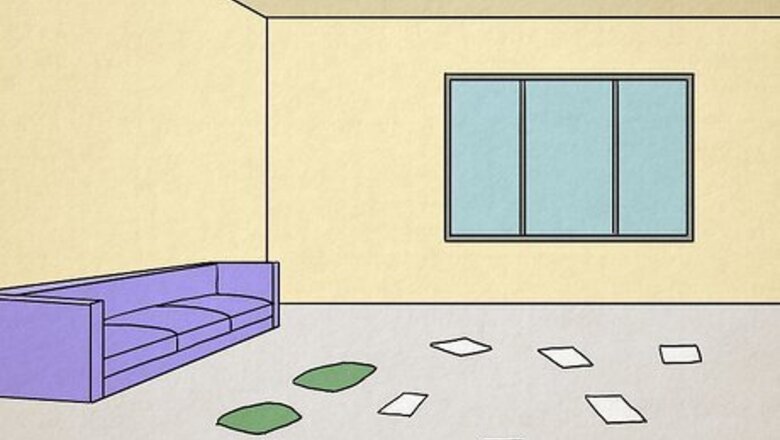
views
How to Play the Floor Is Lava Game
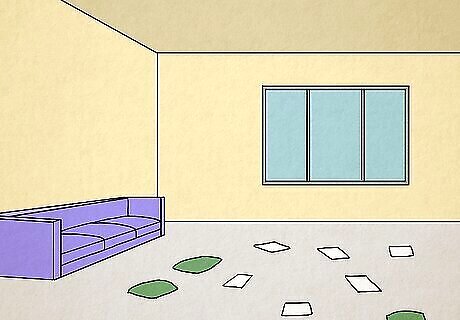
Set up an open area with furniture, pillows, mats, and/or paper sheets. If you’re playing the Floor Is Lava game indoors, usually, the furniture is what players stand on to avoid the ‘lava’ (the floor). However, if you don’t want your players standing on and jumping over furniture, create a play area by placing pillows, couch cushions, or sheets of paper on the floor. Make sure there are more safe spaces from the lava than there are players so people can move around during the game without running into each other. If you’re going to play outdoors, use sheets of newspaper or foam mats to stand in for the furniture used in the indoor version of the game.
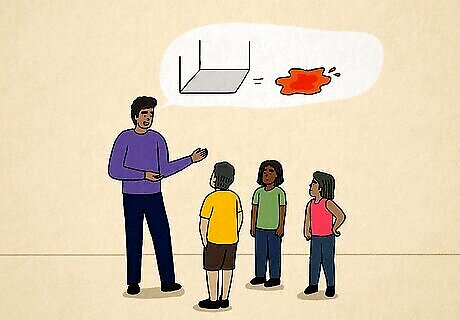
Explain to players that the floor is lava and they can’t touch it. Lay out the ground rules so everyone knows how to play. The main rule is that once the game begins, the floor is lava! Players who are still on the floor after the first five or ten seconds are “killed” by the lava and have to wait for the next round or game. The rest of the gameplay depends on whether you’re playing an elimination-style game or an objective-based game. In an elimination-style game, players regularly switch places as safe spaces to stand on are slowly eliminated until one person remains—they win. In an objective-style game, players or teams must follow a specific path to escape the lava area and reach a destination. It may be timed or simply about finishing the course.
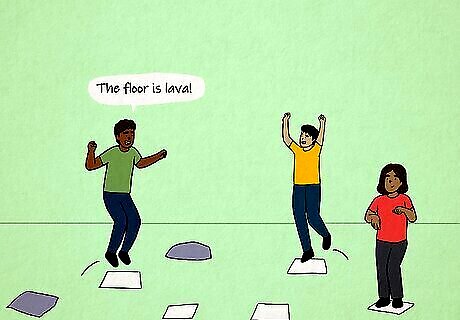
Have someone say “The floor is lava!” to start the game. This signals to all players that the game has begun. Players must jump onto a safe zone—either furniture, their sheet of newspaper or foam mat, or pillows and couch cushions—within five to ten seconds.

In an elimination-style game, have players switch spaces when the music stops. Treat it like musical chairs and play music while players stand still on their safe spot. Stop the music and give everyone five to ten seconds to find a new safe place without touching the “lava” (the floor). Eliminate safe spots as the game progresses to make it harder. Keep going until only one player remains. Decide ahead of time if two players can stand on the same spot—or if that will make it sink into the lava!
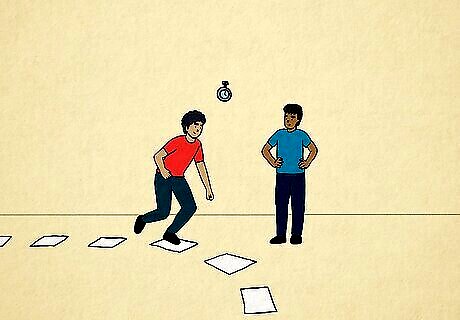
In an objective-based game, have players reach a destination to win the game. Create a pathway through the lava that players must jump through in a set amount of time. Or, have them make a DIY path by placing sheets of newspaper on the ground, jumping to them, and picking up the old ones to continue the path. You can even split players into teams to see who completes the course the fastest while surviving the lava.
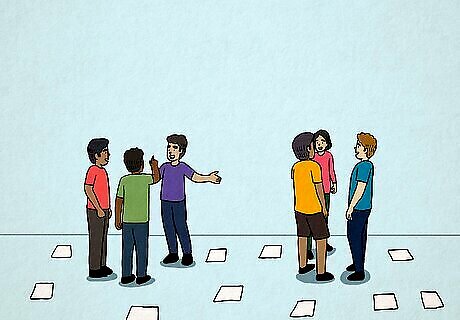
Have players reflect on strategy after the game. If you’re playing with a classroom, a youth group, a scout troop, or another group in an educational context, ask players to reflect in pairs after the game. Have them think about what strategies worked or didn’t work, what they would do differently, and what their favorite part of playing was.
How to Play The Floor Is Lava! Board Game
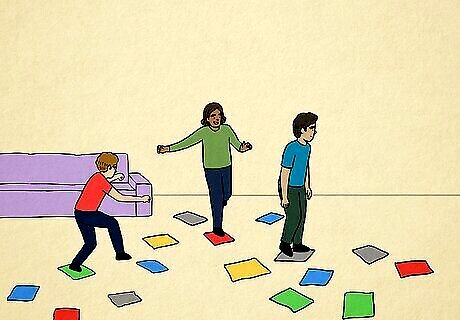
Prepare the playing area and place the lava stones. Find a space with carpet or grass flooring if possible. Remove any breakable objects and furniture from the area. Once the area is clear, set the board game’s 25 colored foam lava “stones” around the room. Players jump onto these stones during the game. Place the same colored stones far apart from each other. That way, players can easily jump to different colored stones—since the color of the stone they’re on matters during gameplay. Some of the stone tiles have question mark symbols on them (“?”). Scatter these throughout the room—landing on them makes players have to do challenges.
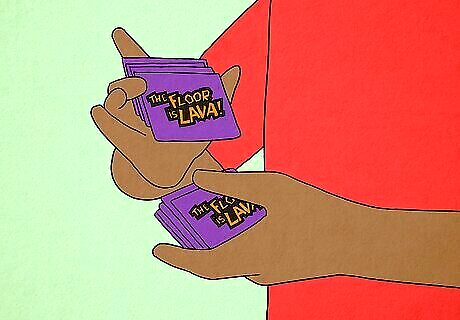
Shuffle the challenge card deck. Whether it’s your first or tenth time playing Endless Games’ The Floor Is Lava!, it’s a good idea to shuffle the challenge cards so they’re mixed up. Once they’re shuffled, place the deck face down in a convenient location near the game’s spinner.
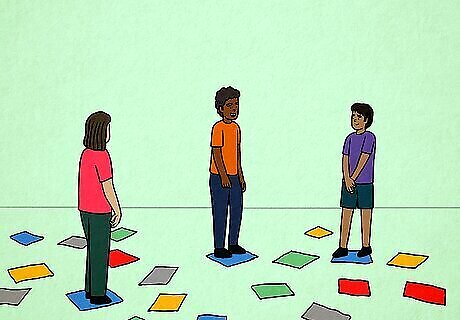
Have all players stand on a stone. It doesn’t matter which color stone (aka foam tile) they choose. Try to get everyone to space themselves apart by a few tiles so they’re not bumping into each other when they move.
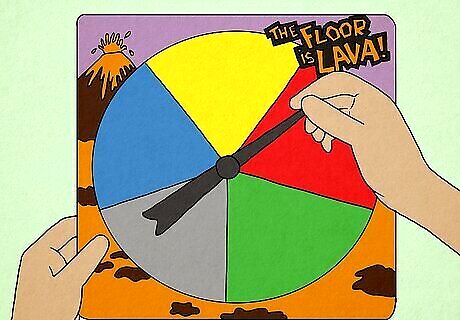
Spin the spinner and have players move to that color stone. Only spin once, unless it lands on the same color that players are already standing on. Say the color out loud and watch everyone scramble to jump to a stone of that color without touching the lava. Pay attention to who jumps last and if anyone jumps on a question mark.
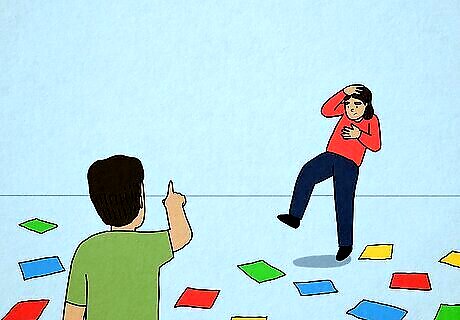
Eliminate players who touch the floor. Since the floor is lava, touching the floor means “dying” and being eliminated from the game. If a player falls while jumping and touches the floor with their hand, foot, or any other body part, tell them to leave the playing area until the next round or game.
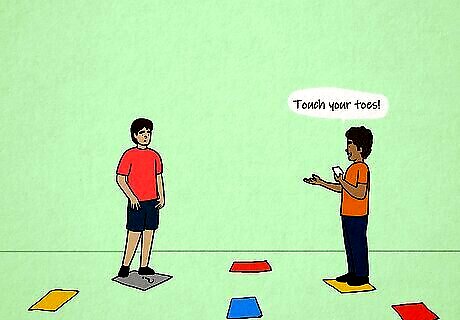
Complete a challenge-card task for players on a “?” tile. Have players check to see if they’re standing on a tile with a question mark. If they are, draw a lava challenge card from the top of the deck. Read the challenge aloud. Have them complete the challenge without touching the floor, or they’ll be eliminated.
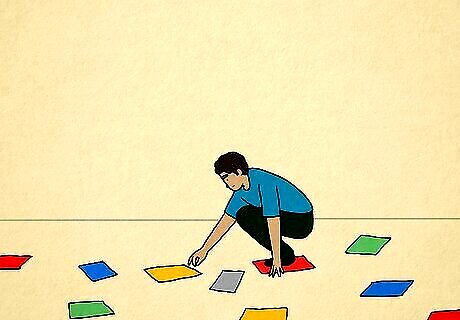
Have the last player to jump remove their previous tile. Observe who is the last player to successfully jump to the correct colored stone or tile. Have them pick up the stone they jumped from and toss it out of the playing area. Do this every turn to narrow the amount of stones, making it more difficult to win.
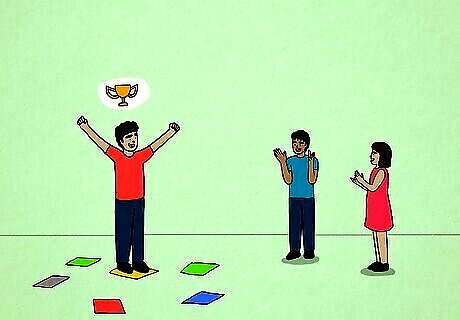
Declare a winner when one player is left. As you make it through the rounds, wait for one player to outlast all the others. Congratulate them for surviving the lava! If the spinner lands on a color and all stones of that color have been removed, spin again. If there are only two tiles left of different colors, keep spinning the spinner until it lands on one of the colors. The player standing on that color tile is the winner. Alternatively, have both players do challenge cards until one falls into the lava and the other wins. If the game ends with two players standing on two of the same colored stones, declare a tie—they’re both winners!
Fun Variations to Try
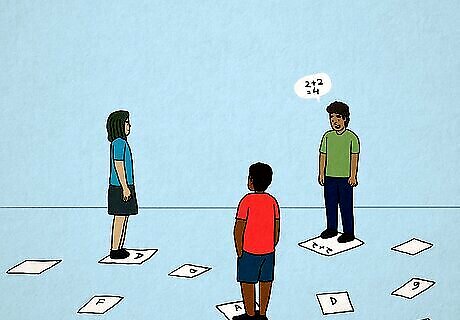
Add educational tiles instead of furniture. Print or write educational information like sight words, letters of the alphabet, numbers, or basic math equations on sheets of paper. Have players read aloud what’s on their tile, make them jump to a specific letter or number, or have them solve the equation of the tile they land on (otherwise, they sink into the lava.) For added educational benefit, read players fun facts about lava and volcanoes during the game.
Have players play tag during the game. Choose one player to be “it” at the start of the game, just like you do while playing tag. Play the Floor Is Lava game as normal, but have the “it” player try to tag other players during the movement phase of the game. Give players ten seconds to move to a new safe space each round—and avoid the “it” during that time. Whoever the “it” player touches becomes the new “it.”
Play the Floor Is Lava at a park to imitate the TV show. On Netflix’s popular Floor Is Lava TV series, players use rope swings, foam pits, ladders, and other equipment to avoid the lava. Go to a park playground to replicate this environment. Have players use equipment like monkey bars, jungle gyms, swings, and ladders to avoid the lava (the ground). Another option is to go to an indoor play gym that allows room rentals. Bring a large group and set up mats, foam pits, and other safe gym equipment that can be used as safe spaces during the Floor Is Lava game.
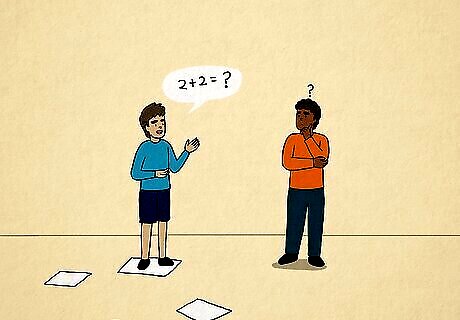
Offer ways for eliminated players to rejoin. To make the game last longer and boost young players’ confidence, give them small tasks to complete so they can rejoin the game. Make them read a sentence, solve a math problem, or roll doubles with a pair of dice to get back in the playing area.
Similar Games
Four Corners Four Corners is a classic game for classrooms, youth groups, or any big group. All that’s required to play is some paper and a pen or pencil. Players mark each corner and make one person “it.” The “it” counts down from 10 while everyone goes from corner to corner. Then, the “it” randomly points to a corner with their eyes closed and the people standing there are out. The last player standing wins.
Red Light, Green Light Anyone can play Red Light, Green Light, as long as you have a clear hallway or yard to run in. The classic kid’s game lets one player (or the adult leader) be the traffic cop. Everyone lines up at a starting line. The cop says “Green light,” and players run forward. But when the cop says “Red light,” everyone must freeze instantly—or be eliminated. Players who make it to the traffic cop win.
Sharks and Minnows Looking for a game you can play in the pool? Try Sharks and Minnows. The classic pool game is similar to tag. One player is designated a shark while everyone else is a minnow. The shark is in the middle of the pool while the minnows are at one end. They try to cross the pool while the shark tries to tag them and make them into sharks. The last surviving minnow wins—and they’re the shark in the next round.
Duck, Duck, Goose Duck, duck, goose is played all over the world, and it’s easy to learn. Everyone sits in a close circle except one player who’s “it.” The “it” runs around the outside of the circle, tapping people’s heads and saying “duck” or “goose.” When they say “goose” while tapping someone, the “goose” has to chase after “it” and tag them before the “it” player takes their spot in the circle.










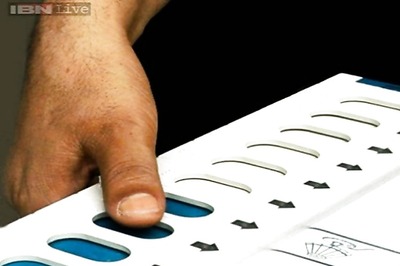



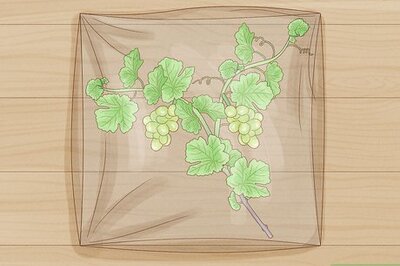



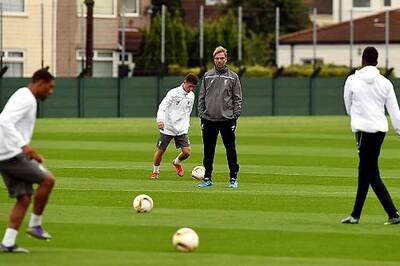

Comments
0 comment